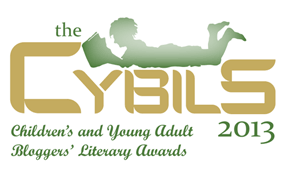Exemplary is a Tricky Concept - GN Edition
 |
| http://www.cybils.com/ |
Find the full list of 2013 finalists here!
Now the time has come. The finalists have been selected. My library bag is full. I've already read many of them (especially in the middle grade category), and my young adult nominee actually made the cut!
Before I dive into the pile and read (or reread) the finalists, I wanted to spend some time considering my criteria for what makes an Exemplary comic or graphic novel. It's easy to tell you if I enjoyed one. It's even easier to tell you what my students will enjoy. But the responsibility of choosing ONE of the list of finalists as "the best" hangs heavy on my shoulders.
Here are my current thoughts - though I reserve the right to add to my criteria as I read.
The first few really apply to books in any format. An excellent graphic novel should, first and foremost, be an excellent book.
Story:
-- There is a well crafted plot, with a compelling storyline that makes me want to find out what happens next.
-- The creator plays with story structure in an intriguing or unusual way, without damaging my ability to make sense of the plot.
Characters:
-- There is an well rounded protagonist with believable motivations.
-- The characters develop over the course of the story.
-- The creator avoids sexist/racist/etc. stereotypes
The next portion relates more specifically to comics and graphic novels as a format
Art:
-- There is a distinct, consistent artistic style
-- The distinct style fits the topic and aids my enjoyment of the story
-- The panel sequencing is clear - I have no trouble determining the order (and the target audience would also clearly get the sequencing)
-- Unusual and/or interesting panel style that fits the story and/or aids understanding
-- The coloring fits the topic/style of the art and aids understanding of the story.
-- The lettering is clear and aids understanding.
-- Bonus points for artistic risks/unusual style that AIDS - not hampers - understanding.
Please chime in! Anything you think I should have added to this list? I want to keep my ideas simple, to help me as I argue for my top picks.
.JPG)


Comments
Post a Comment